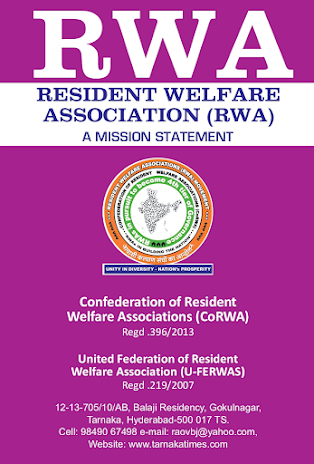In a communication to the Union Minister of Civil Aviation & Housing and Urban Affairs, Col Tejandra Pal Tyagi, Convener, CoRWA pointed out that among the three categories of footpath encroachers well heeled house and building owners are the who flout the law more blatantly while the other categories comprising, small shops and street vendors do it as they do not have an alternative.
Asking the Ministry to direct ULBs to carry out a listing of such encroachments, CoRWA has also demanded a study of the financial impact of the same.
Excerpts from the commnication to the Minister below:
Honourable Shri Hardeep Sigh Puri Ji
Minister of Civil Aviation & Housing & Urban Affairs.
Jai Hind,
Whether you live in a city or a small town, and whether you drive a car, take the bus, or ride a train, at some point of the day, everyone is a pedestrian. This is universal. According to law, a pedestrian must walk only on footpaths (also called sidewalks, pavements), not on roads. So it is for vehicle drivers - they must confine only to roads, and not crash into footpaths. When pavements are encroached, damaged, or otherwise obstructed, a pedestrian is “forced” to go onto roads becoming thereby more vulnerable to accidents. Indian city footpaths are largely “encroached”, a more dangerous situation for senior and super-senior citizens, the sick, the disabled, and the children. It is strange that such sidewalks are uncared for by city civic authorities and city traffic police.
Encroachers have no ‘class’ distinction, they can be rich, middle class, or poor. There are 3 main categories of “encroachers”:
1: Street vendors/hawkers/make-shift shop-keepers. They are the ‘most visible’ type.
2: Shop-keepers, small, medium, and some large. They are the ‘partially visible’ type.
3:House and building owners. They ‘invade’ the footpath-spaces in front of their houses/buildings by constructing decorative gardens, sloping ramps and steps, tree plantation, mini-parking areas. Affluent and influential, they are ‘virtually invisible’ type. The latter cause MAXIMUM harm.
There is therefore an urgent need to change our mindset and adopt a NEW STRATEGY that is most advantageous to pedestrians.
EFF is a gigantic and highly challenging task but not impossible to practise with newer management skills, supportive media, public cooperation and above all the Ministry for Housing and Urban Affairs under your leadership.
CoRWA requests the following actions:
Ask the ULBs to compile the encroachment details under category 3, its financial implications and also identify whether the encroachment is temporary or permanent.
Organise a National Seminar on Encroachment Free Foot Paths under the aegis of MoHUA in association with CoRWA. Let a clause be included in all Registrations of immovable properties that owner cannot occupy even an inch outside the boundary wall in the name of temporary green cover.
Cordially,
Col Tejandra Pal Tyagi,
Convener, CoRWA & Bharat Ramkrishna Sant Member







0 Comments